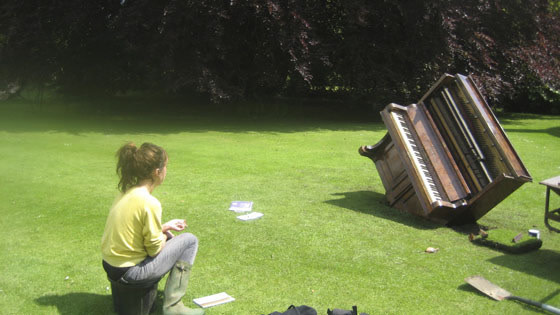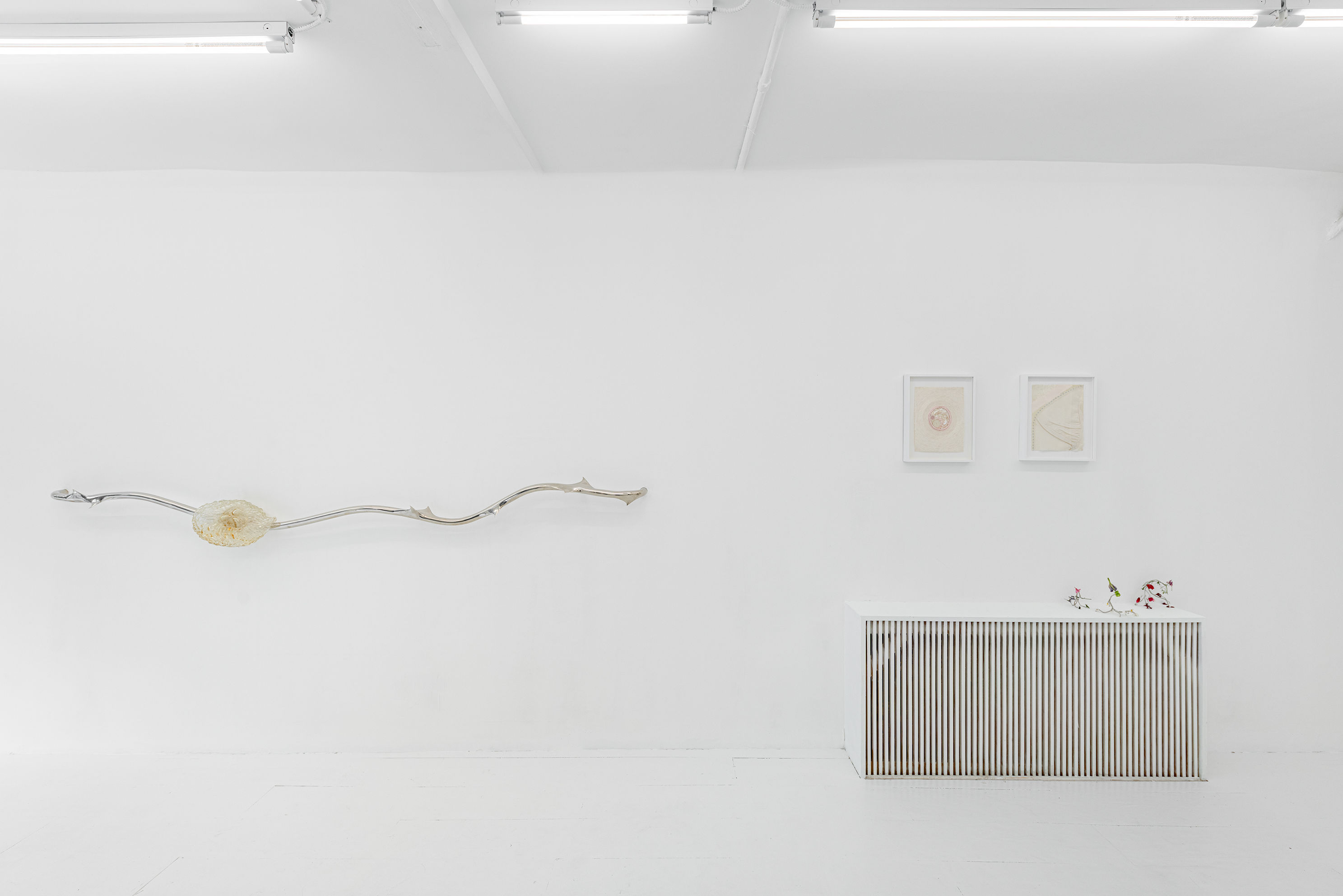Breaking: Calligram Foundation Gives PICA $600,000

Exhibition Piece 88, nature plays the instrument and the instrument plays nature, Allie Furlotti.
A couple weeks ago, we introduced readers to the faces behind the mysterious Calligram Foundation, which audaciously gave $110,000 to five oil painters last year to fund a year of painting, no strings attached. At that time, Calligram’s president, Allie Furlotti, and executive director, Satya Byock, told us they were finalizing the details for their next project but weren’t ready to announce it publicly. We hinted at it in a round up of awards, but now Culturephile is delighted to be the first to share the news that Calligram is giving $600,000 to the Portland Institute for Contemporary Art (PICA) over the next three years to create the Calligram Fund for New Work and to further endow the brand new Precipice Fund.
“The scale and timing of this is really extraordinary,” Artistic Director Angela Mattox told Culturephile in the PICA office. “A grant of this scale is rare even in the national field, and it can take years to go through a process with a foundation and then still not get the grant. So in the second meeting [with Calligram], when it became clear that the funding would come through, tears started welling up across the table. I’m getting verklempt talking about it now, because it just doesn’t happen.”
The award commits $50,000 per year to the recently announced Precipice Fund, a re-granting initiative that was established with an award from the Warhol Foundation for $75,000 per year to provide grants to hard-to-fund informal and experimental visual arts projects and collectives. Calligram’s remaining $150,000 a year will support PICA’s core programming, with a primary focus on commissioning and presenting new artistic works from local and national artists across disciplines.
“This takes us into a new era of supporting new work,” says Mattox—a state all the more remarkable for the struggle that arts organizations are having across the country in carving out resources for new works. “We’re really resourceful and great at making things work with very little, but the commitment they’ve made allows us to have greater imagination and planning—to dream further out”
The award comes at an exciting period of growth for PICA. The institute made a strategic decision in 2011 to increase its visibility and impact outside of its Time-Based Art Festival. It undertook a three-year capacity building initiative that included moving from a corner of the Wieden+Kennedy building to its own space on SW 10th Avenue, expanding its year-round programming, and hiring a full time artistic director (previously TBA had been programmed by a rotating part-time director who lived elsewhere). The expansion was funded by a consortium of local foundations whose contributions are winding down. (The last time PICA got a grant of the scale of Calligram’s was from the Doris Duke Foundation in 2000.)
Into this void steps Calligram with what amounts to the nonprofit Golden Ticket: an award that supports core programs as opposed to specific new projects or capacity building, and does so without the tight requirements and proscriptions that generally restrict how awards of all sizes are spent. The only thing Furlotti and Byock asked the PICA staff to do was dream.

Allie Furlotti in "Cold Feet" from "The Funeral" (2009).
“Every time I would apply for a grant, the process is awful,” said Furlotti, a performance artist herself, in our previous interview (she was unavailable for comment for this article because she became a mother over the weekend—a more cosmic symbolism we can’t imagine). “I thought, if you get money directly to the artists and let them do whatever they want with it, that’s real freedom.”
Attracted to PICA’s commitment to contemporary programming and broad community reach, she and Byock first sat down with Executive Director Victoria Frey and the curatorial staff after last September's TBA. The word ‘symbiosis’ got tossed around a lot as the two groups realized their missions aligned. PICA submitted a proposal in late November that Calligram accepted several weeks later, and the gift became effective at the start of 2013 (truly a head-spinning speed in the world of foundations).
“Calligram was established to help passionate and dedicated artists create new work with limited barriers, and also to show art and stimulate reactions and participation from viewers,” says Byock, emphasizing Calligram’s commitment to building relationships instead of bureaucracies and red tape. “These are areas in which PICA excels.”
Unlike the Precipice Fund, which is a panel-reviewed process open to any application that meets its criteria, the Calligram Fund for New Work will be at the curatorial discretion of the PICA staff. Mattox isn’t ready to announce any of the artists or projects that will be funded by the award, but she does say that it will allow the institute to commission larger projects that take several years to complete, to further engage national artists in the local ecosystem with artist residencies, to strengthen the mentoring and professional development roles the staff often unofficially play for artists, and to greatly expand the institute’s community outreach and engagement programs. Both PICA and Calligram stress that the money will go towards building long-term relationship with artists and the local community. In fact, between Precipice and Calligram, PICA is hiring a new fulltime outreach coordinator, Roya Amirsoleymani.
“What Calligram is doing is exhibiting a kind of philanthropic leadership that I’m not seeing in the country,” says Mattox. “There’s no, ‘this is how things have to be done in the foundation world.’ They’re creating their own parameters, and that’s just so refreshing.”
While some, including this blog, cited the Medici patronage model when talking about Calligram’s direct support of artists last year, Byock says that she and Furlotti are more drawn to the model set by famed writer Gertrude Stein. “Her philanthropy was combined with her life; there was not a stark, impersonal separation between them,” says Byock. “Her relationships, her social gatherings, her art, her direct support to artists, and the works they created, these things all intermingled and enriched one another. And there is no question that she supported artists whose influence and work now enrich us all.”
While Stein is no doubt an ambitious model to aspire to, it can be certain that Calligram’s gift has given PICA a small respite from the constant fundraising cycle that plagues nonprofits, and with it the stability to dream a little, and to focus on those artists who might, one day, enrich us all.




